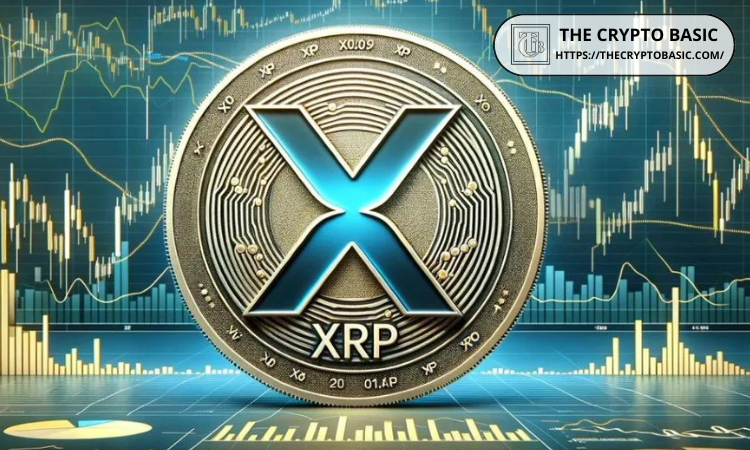Author: Ignas, DeFi researcher; Translation: xiaozouo
1, opening
Perpetual contract exchange is a highly competitive field, with leaders constantly changing (from dydx to GMX to Hyperliquid).
However, Ostium is very unique. They introduced on-chain leverage trading for S&P 500, Dow Jones, Nikkei, gold, copper, and numerous other traditional finance (TradFi) assets.
These "real world assets" (RWAs) don't actually support anything, but Ostium brings on-chain synthetic price exposure through oracle price feeds. Built based on Arbitrum.
As far as I know, this is not the first time someone has tried to do this, but Ostium has gained good attention:
* The total locked value (TVL) in the Ostium liquidity pool (OLP) reaches $46 million, and its function is similar to HLP on Hyperliquid for initiating transaction and clearing fees.
* 845 active users per day and 2225 active users per week.
* Total transaction volume reached US$2.1 billion.
Ostium will launch a point campaign for traders and OLP depositors starting March 31.
I believe that even for synthetic assets, on-chain RWA transactions have great potential for many cryptocurrency native users. It helps us avoid withdrawing stablecoins to traditional financial platforms.
This may be a good airdrop opportunity for early users.
2、Axiom
You may have heard of Solana trading platforms such as Photon, BullX, BonkBot, etc., but that's all in 2024.
Axiom, powered by Y Combinator, started operating in February and has acquired dominance in the category (44% of the total share. The dark blue part in the picture).
Interestingly, Axiom's official X account and co-founder are very low-key on X and have few posts. Marketing seems to be spread through word of mouth.
More importantly, Axiom's ultimate goal is to realize the transaction of any asset on any chain, including perpetual contracts (onlined through Hyperliquid), income agreements, wallet tracking and other functions.
When the Solana trading ecosystem becomes active again, Axiom can really benefit from it.
The points activity has been launched, including transactions, tasks and recommendations. I'm more optimistic about Axiom tokens.
3、Fragmetric
Let’s not talk about the transaction application.
Fragmetric reminds me of the Solana DeFi boom in early 2023/2024, when Jito and Jupiter made generous airdrops.
If you missed Solayer (LAYER did rise well after airdropping, after all), this is your second chance.
I have two news about Fragmetric:
* Bad news: We are not the very early batch, and the deposits were opened as early as October 2024.
* Good news: We are not too late, because the tokens are not yet online, points are still being issued, and most of the deposits start to flow in late January. And this is a simple income farming model that doesn’t need to be cared for after depositing.
In any case, Fragmetric is a liquidity restaking agreement built on Solana.
When you deposit SOL or liquid staking tokens (LSTs) into Fragmetric, you get liquid staking tokens (LRTs) like fragSOL or fragJTO.
The restaker becomes SANG (SolanA Network Guardian), a community of guardians that protect the Solana ecosystem. You can also get additional rewards for protecting NCN/AVS (new decentralized services).
If you have idle SOL and want to spread the risks of Kamino, Marginfi, Solayer and other platforms, this is a very simple strategy.
The total lock value (TVL) is $125 million, so it's not too early.
F points
F points are Fragmetric's loyalty system that can be earned by simply holding LRTs. Or you can get bonus points by wrapping LRTs (for example, wfragSOL for DeFi's wfragSOL).
Fragmetric raised a total of $12 million in funding. The latest round of $5 million is invested by RockawayX, Robot Ventures, Amber Group, and BitGo.
Anyway, this is a super simple SOL strategy.
4 、 Loopcale
Now, Loopscale allows you to earn more on your newly acquired fragSOL.
Loopscale brings innovation to Solana DeFi through modular, order book-based lending.
This is different from the liquidity pooling pattern used by Kamino, Marginfi, and even Aave:
The Loopscale document describes this: “By replacing liquidity pools and algorithmic interest rates with direct order book matching, Loopscale improves capital efficiency, enables more precise risk management, and supports new market types that are difficult to achieve in traditional DeFi architectures.”
You can borrow, revolve (similar to Kamino's one-click leverage), or join the vault.
Since Loopscale ended its closed beta five days ago, they have launched the Creation Vault, offering 6x points before reaching the cap (not nearly as far as the cap is concerned!)
A simple strategy is JUPSOL loop operation, with an annualized rate of return (APY) of more than 22% (similar to Kamino multiplier). You can earn 2x points.
I've asked them questions about decoupling. They say that short-term LST/LRT decoupling won't liquidate your loop operation, "but pledge gains are lower than borrowing costs or validators may perform poorly".
If you are more aggressive and want to get 32% APY on SOL, there is another vault for your fragSOL to use:
* Save SOL to Fragmetric here.
* Get PT-fragSOL in Exponent (Pendle of Solana).
* Loop PT-fragSOL on Loopscale to get 32% APY.
Note: You will give up the bonus points for Fragmetric but get a higher fixed APY on Loopscale.
The total lock-in value is currently about $40 million, so it's not too late.
Loopscale has strong backings: CoinFund, Solana Ventures, Coinbase Ventures, Jump and Room40.
5、Upshift
Do you think DeFi is becoming too complex and finding opportunities for risk-adjusted high returns is becoming more and more time-consuming?
Don't worry anymore.
On Upshift, you can deposit cryptocurrencies into vaults managed by “mature hedge funds” and investment managers.
Earnings strategies include circular operations, as well as more complex products involving Delta neutral hedging, OTC options or systematic stablecoin decentralized exchange market making.
Upshift has 4 core products:
* Lending: Provide on-chain excess mortgage loans to proven institutions.
* DeFi Income: A vault planned by top DeFi funds.
* Vault-as-a-Service: Provides plug-and-play vaults for the protocol.
* Synergy: Borrow through treasury to improve returns and capital efficiency.
As of this writing, the total lockdown value reached $236 million, which performed well. They provide 5x points before their deposits reach $750 million.
To be honest, my favorite strategy is Hyperbeat Ultra HYPE, which manages my HYPE earning farming on the HyperEVM ecosystem.
Upshift is powered by Dragonfly VC, Hack VC, 6MV and Robot Ventures.
6、Level
If you hold any stablecoin, please note:
Level is a stablecoin protocol that issues lvlUSD, a stablecoin backed by USDC and USDT, generating revenue through blue chip lending protocols.
You deposit USDC → USDC is deposited to Aave/Morpho, etc. → You obtain lvlUSD, which can be used in other DeFi fields.
You can simply pledge lvlUSD into value-added slvlUSD and get an annualized rate of return of 8.48%.
But to earn XP points, you need to use lvlUSD to farm in the DeFi protocol: deposit lvlUSD into Curve, Spectra, or Pendle (current PT yield is 13%), etc.
As of this writing, its total locked value was $138.26 million, which performed quite well. Level's social account followers on X are also growing, which bodes well when the tokens fall.
Level is powered by Dragonfly VC and Polychain.
Level is not the first protocol to try this model, and many protocols fail to achieve product market compatibility. However, with considerable gains and upcoming airdrops, it could be a promising opportunity.
7 、 are
Huma is the hottest narrative of stablecoins and real-world assets (RWA), but it is difficult to get related exposure. You can wait for Circle to go public, but don't expect to increase by 10 times a day.
PayFi network Huma recently raised $38 million from Hashkey Capital, Folius Ventures, Stellar and more.
Huma has previously merged with Arf, a Circle-backed agreement that provides liquidity and settlement services for cross-border payments.
So what is unique about Huma?
Paying takes several days and is expensive. Banks make most of their profits. Huma solves these problems by using blockchain and stablecoins (USDCs) to enable funds to flow instantly and at low cost worldwide.
Huma accelerates real-world payments through on-chain stablecoins and liquidity. Financial institutions can settle large amounts of funds globally, replacing the needs of legacy systems or pre-financing mechanisms such as SWIFT.
Here are two ways to earn money:
* Classic mode: Stable monthly yield + Feathers (points). Currently it is over 10%.
* Maxi model: annualized yield is 0%, but if you are optimistic about Huma's future governance token, you can get 5 times Feathers points.
Now you can also deposit USDC → get PST (PayFi Strategy Token), an interest-generating token that can be used in Solana DeFi (can be redeemed on Jupiter and mortgaged on Kamino).
Even locked positions can be exited early through the PST liquidity pool.
Currently, Huma:
* USDC annualized yield is 10.5%.
* $74.7 million is used to support PayFi transaction income.
* Holding $7.2 million in current assets (stable coins) is used for emergency response and does not generate returns.
So the total lock value of $81 million is performing quite well.
8、DeFi App
You may often see the promotion of DeFi App on X. Not only is the number of posts, but the way of publicity also surprised me a little.
This will make me more cautious and create a strange intuition.
The reasons for bullishness are as follows:
* It has become the third largest decentralized exchange (DEX) aggregator with daily trading volume of US$229 million and weekly trading volume of US$991 million.
* Raised $6 million from Mechanism Capital, Selini Capital, North Rock Digital and about 50 angel investors at a valuation of $100 million.
* Obviously I'm ranked higher in Degen Arena's Faction. (Details below)
DeFi App is an integrated super application that makes DeFi easy and simple.
Judging from the beta application, the cross-chain redemption function is very excellent. No annoying handling fees, support for Solana and EVM chains. They will add features such as income farming and perpetual trading.
Their token HOME is not online yet, and you can earn money by redeeming tokens.
These are basically the functions at the moment, but! ! ! You can earn points when redeeming and joining Degen Arena via Faction.
The first 50 Factions receive additional rewards and early access to new DeFi App features. Why join Faction? In Degen Arena Season 1 airdrop, HOME tokens have a larger allocation ratio:
* 60% of XPs entered the Faction XP pool in the first season.
* 40% of the seasonal rewards enter the Faction bonus pool.
I am currently ranked 38th.
9、Slingshot
If there is a mobile app that can redeem all tokens on all chains, it might be Slingshot.
Before you try Slingshot, there are a few things you need to know:
* The operation of creating an account is super easy, just like a Web2 application.
* Magic Eden recently acquired Slingshot, which makes the Slingshot token airdrop less likely.
* You can quickly exchange Bitcoin Rune tokens, which is one of the main reasons why I like this app.
So, if you are primarily cryptocurrency trading on your mobile device, Slingshot is a must-try app.
















No comments yet